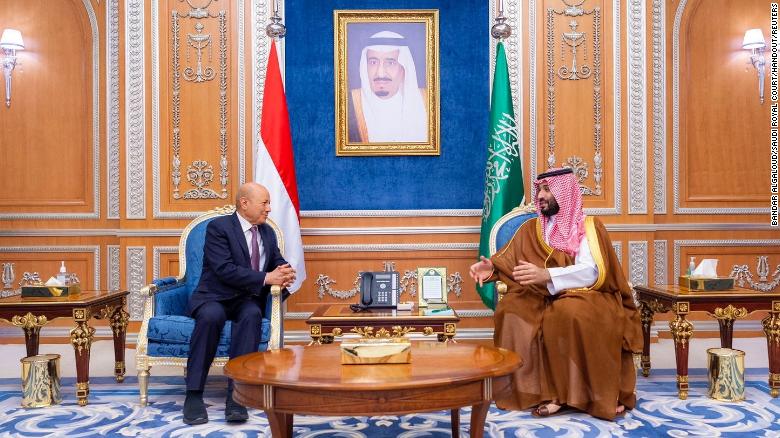Further to the GCC-led peace initiative discussed in the previous edition of the Talos Regional Report, the primary stakeholders in the Yemen conflict, including the Saudi-led coalition and the Houthi Movement, agreed to a two-month truce in early April. The truce, brokered under UN supervision, came into effect on 1 April and involves several confidence-building steps including, most notably, temporary exceptions to the air and sea blockades affecting the port of Hodeida and Sana’a International Airport. A total of 18 vessels carrying fuel will be allowed to dock at the port during the two-month period, and two commercial passenger flights per week are allowed the land and depart Sana’a for the duration of the truce. The destinations however were restricted to Jordan and Egypt, and as of 17 April no flights have been recorded, but the UN said this week that preparations to allow limited air traffic are “ongoing.” Under the truce, the main warring factions have also committed to resuming dialogue regarding road access to the city of Taiz and other parts of the country to facilitate humanitarian deliveries.
As of 18 April, the truce remains largely in effect across the country and this week the UN praised several “encouraging signs”, including a decline in civilian casualties, an absence of airstrikes and an increase in fuel supplies to partially offset humanitarian conditions. That said, violations have been reported intermittently since the start of the truce by channels associated with both sides. According to Saudi-backed government sources, the Houthi Movement resumed ground operations in the vicinity of Marib city the previous week, with attacks continuing near the front line. On 16 April, Saudi-backed government army officials claimed air defense systems intercepted an explosive-laden UAV in the vicinity of Marib city, with no casualties discussed. For their part, sources affiliated with the Houthi Movement claimed Saudi airstrikes targeted sites near the port of Hodeida on 13 April while Iranian state-linked sources accused the coalition of having violated the ceasefire more than 70 times since 1 April.
As usual, these claims were not independently verified by more credible sources and the reports form an anticipated part of the ongoing propaganda battle waged between the two sides. Last week, UN Special Envoy Hans Grundberg acknowledged “some hostile military activities” but said the truce contributed to a “significant reduction in hostilities”. The statement particularly noted the need to address “reports of military operations around Marib”, lending credence to Saudi-linked accusations that the Houthi Movement is predominantly responsible for the violations. Typically reliably sources also confirm a relative absence of coalition airstrikes in recent weeks, with reports of airstrike activity emanating mainly from sources affiliated with the Houthi Movement. On the other hand, no large-scale Houthi ground operations have been recorded and the tempo of operations has undeniably been reduced. Likewise, no significant long-range ballistic missile and UAV strikes targeting Saudi Arabia have been credibly documented since the drastic intensification of such attacks was observed in the lead-up to the ceasefire.
Cautious optimism therefore remains in effect that the current truce will last longer than previous agreements achieved since the start of the conflict in 2015, however, the current arrangement is understandably fragile. It should also be noted (as UN officials have repeatedly emphasized in light of misleading international media coverage) that the current arrangement does not amount to a full-scale “ceasefire”. Whereas the main parties under the truce have agreed to stop fighting, a ceasefire typically involves monitoring and de-escalation measures that have yet to be agreed upon. Instead, the UN has repeatedly called for de-escalation in line with more vaguely defined “truce-mechanisms” agreed prior to 1 April.
President Hadi transfers powers to presidential council
In a related development, the truce was followed by President Abed Rabbo Mansour Hadi’s announcement on 7 April that he would transfer executive powers within the Saudi-backed government to a presidential council. According to a statement disseminated by Saudi state media, “the newly-created body included a president and seven members and will lead negotiations to establish a permanent cease-fire and political settlement to the conflict.” Shortly before the statement, Hadi dismissed Ali Mohsen al-Ahmar – who served as Hadi’s Vice-President for over five years. While widely regarded as a surprising development, Hadi and al-Ahmar’s positions were significantly weakened in recent years by Houthi territorial advances and deteriorating economic conditions within government-controlled areas. A Saudi/UAE-backed government reshuffle was rumored throughout 2021 and appears to have materialized in the form of the CGG-led conference held in Riyadh in late March that precipitated the announcement on 7 April.
The new presidential council will be led by Rashad al-Alimi – the former Interior Minister – and consists of eight members reportedly selected during the conference which involved representatives from various Yemeni factions, excluding the Houthi Movement. To recall, the movement conditioned participation on a change of venue and the GCC’s unwillingness to meet these demands, and while expected, raised questions as to whether the conference was merely a symbolic show of commitment to the peace process, rather than a serious peace initiative.
The subsequent truce initiative and Hadi’s transfer of power are both assessed to further prospects for political dialogue, yet the significance and implications of the formation of the council remain unclear. The council members are evenly split between representatives of various UAE-backed southern-based factions, and Saudi-backed government members led by former President Hadi, and are predominantly based in the north. Aside from their mutual opposition to the Houthi Movement, there is little in common by way of a shared vision and goals, and the risk of infighting within the council is significant. On the one hand, the formation of the council may be interpreted as an attempt to consolidate political effort and formulate common goals thus far lacking, while facilitating negotiations with the Houthi Movement through a two-party dialogue. More cynically, the council is seen as yet another Saudi/UAE-backed attempt to unify an anti-Houthi alliance with a view to consolidating the military, as opposed to the political, effort to defeat the movement.
For their part, early Houthi reactions were negative. Lead Houthi negotiator Mohammed Abdulsaman issued a statement calling the formation of the council a “desperate attempt to restructure the ranks of mercenaries to push them towards further escalation”, and there are as yet no signs of Houthi intent to engage diplomatically with the new council. That said, the reduction in hostilities and associated intent to observe the truce remains a positive indicator, potentially indicating a level of pragmatism that supersedes the group’s rhetoric. Combined with a continued commitment to the truce agreed on 1 April, this provides cautious optimism that political progress may be achieved towards a more permanent ceasefire, with heightened diplomatic activity expected to continue over the coming weeks.


